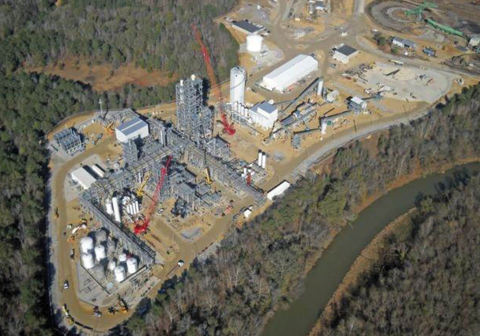A primary objective of the Renewable Fuel Standard (RFS) implemented in 2007 was to stimulate the production of at least 16 billion gallons/year of gasoline and diesel made from cellulosic biomass, or non-food crops and waste biomass like corn stalks, corncobs, straw, wood, wood byproducts and animal manure. But the vision of making gasoline from wood chips never materialized and today’s cellulosic biofuel is a whole different ballgame. In today’s RBN blog, we look at the evolution of cellulosic biofuels and the D3 Renewable Identification Number, aka the D3 RIN.
Part 1 of this series focused on the history of the D3 RIN, the federal subsidy designed to stimulate cellulosic biofuel production. The D3 RIN started as part of a high-profile vision to make liquid fuels from wood chips and other cellulosic biomass. But because that industry never got off the ground, the D3 RIN was effectively deactivated in 2010 by a workaround called the Cellulosic Waiver Credit (CWC), a recognition that it was close to impossible to stimulate the growth of a non-existent industry. But the CWC eventually disappeared from the picture and the D3 RIN was put back into service. That change at the start of 2023 — along with the budding of a new cellulosic biofuel industry — has put the D3 RIN back into the spotlight and raised the question of how high its price might go.
The cellulosic biofuel industry of 2025 looks very different than the wood-to-gasoline vision of 2007. It consists of the gathering and upgrading of biogas generated at landfills and dairy farms, transporting that gas through natural gas pipelines, and eventually delivering it for use in heavy-duty vehicles fueled by compressed natural gas (CNG). But before going deeper into the cellulosic biofuel industry of today, let’s rewind to 2007 and tell the story of Kior Inc., the most prominent case study of the cellulosic biofuel world in the early days of the RFS.
To gain a detailed understanding of biofuel markets, and RBN’s perspective on its prospects and challenges, check out the early 2025 edition of the Future of Fuels report by RBN’s Refined Fuels Analytics (RFA) practice.
Kior was formed in 2007 as a joint venture between BIOeCON, a Dutch technology company, and Khosla Ventures, a firm owned by Vinod Khosla, a Silicon Valley venture capitalist and co-founder of Sun Microsystems. Kior planned to commercialize a process for converting Mississippi Southern Yellow Pine wood chips into a bio-crude oil using fluid catalytic cracking, the same method used in petroleum refineries to produce 40% of the U.S. gasoline pool. As we explained in Breaking The Chains, fluid catalytic cracking breaks large crude oil molecules into smaller ones in the gasoline and diesel fuel range, and, in principle, can do the same to cellulosic molecules. Pilot plant testing at Kior’s facility in Houston and at the Chemical Process Engineering Research Institute in Thessaloniki, Greece, showed the basic feasibility of the process and provided initial estimates of process performance and yields.
The Kior Biofuels Plant in Columbus, MS. Source: Malouf Construction
Join Backstage Pass to Read Full Article








